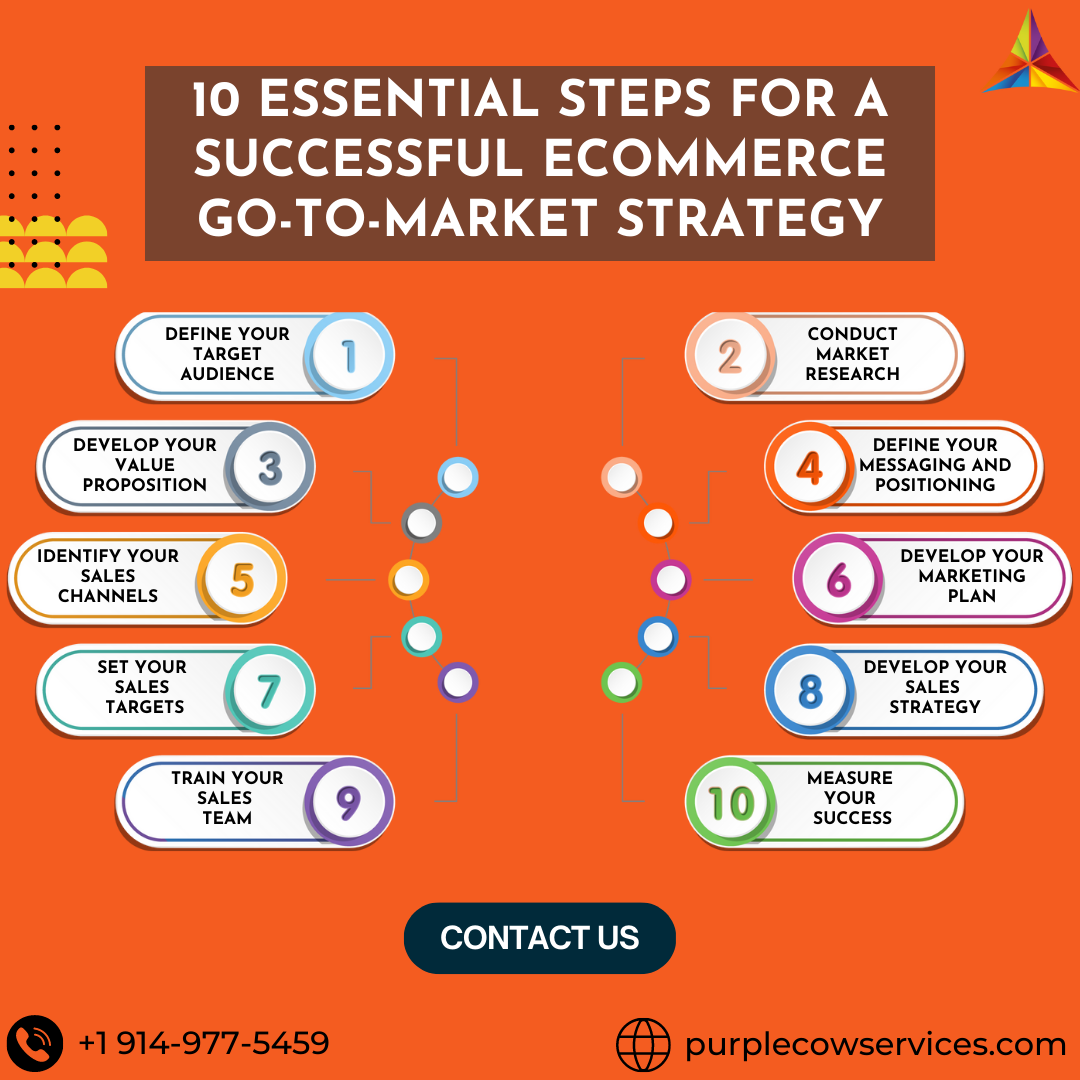Introduction to Go-To-Market Strategy
A go-to-market strategy is a crucial component of any successful product or service launch. It is the process of bringing a new product or service to market and ensuring its success. A well-executed go-to-market strategy can help eCommerce businesses reach their target audience, generate buzz, and drive sales. In this blog post, we will discuss the 10 essential steps for a successful eCommerce go-to-market strategy.
Steps for a Successful Go-To-Market Strategy
Step 1: Define Your Target Audience
The first step in developing a go-to-market strategy is to define your target audience. This involves identifying your ideal customers, understanding their pain points, and identifying their preferences. Tailoring your messaging and positioning to resonate with your target audience becomes possible through understanding their needs and preferences. This will help you develop a compelling value proposition that will attract and retain customers.
Step 2: Conduct Market Research
Once you have defined your target audience, you need to conduct market research to understand the competitive landscape, market trends, and customer needs. This information will help you refine your messaging and positioning, as well as identify the best channels to reach your audience. Market research can be done through surveys, focus groups, and online research.
Step 3: Develop Your Value Proposition
Your product or service’s value proposition is the distinct advantage it offers to your customers. It is the reason why customers should choose your product or service over your competitors. A robust value proposition should be concise, compelling, and easy to understand. It should address the customer’s pain points and offer a solution that is better than what is currently available in the market.
Step 4: Define Your Messaging and Positioning
Once you have developed your value proposition, you need to define your messaging and positioning. This involves crafting a message that communicates the value of your product or service to your target audience. Your messaging should be tailored to the needs and preferences of your target audience and should be consistent across all channels.
Step 5: Identify Your Sales Channels
The next step in developing a go-to-market strategy is to identify your sales channels. This involves identifying the channels through which you will reach your target audience, such as social media, email marketing, or direct sales. You should choose channels that are relevant to your target audience and align with your marketing goals.
Step 6: Develop Your Marketing Plan
Once you have identified your sales channels, you need to develop your marketing plan. This involves developing a plan for how you will promote your product or service through each channel. Your marketing plan should be tailored to the needs and preferences of your target audience and should be consistent with your messaging and positioning.
Step 7: Set Your Sales Targets
To measure the success of your go-to-market strategy, you need to set your sales targets. This involves setting realistic goals for the number of units you want to sell or the revenue you want to generate. Your sales targets should be based on your market research, your value proposition, and your marketing plan.
Step 8: Develop Your Sales Strategy
Once you have set your sales targets, you need to develop your sales strategy. This involves developing a plan for how you will sell your product or service through each channel. Your sales strategy should be tailored to the needs and preferences of your target audience and should be consistent with your messaging and positioning.
Step 9: Train Your Sales Team
Your sales team is the front line of your go-to-market strategy. To ensure that they are successful, you need to train them on your product or service, your messaging and positioning, and your sales strategy. This will help them sell more effectively and ensure that they are representing your brand in the best possible way.
Step 10: Measure Your Success
Finally, to ensure that your go-to-market strategy is successful, you need to measure your success. This involves tracking your sales, monitoring your marketing metrics, and continuously evaluating your strategy. By measuring your success, you can identify areas for improvement and make necessary adjustments to your strategy. It’s important to regularly review your go-to-market strategy to ensure that it is still aligned with your target audience’s needs and preferences.
Conclusion
A successful go-to-market strategy is essential for any business that wants to launch a new product or service. By following these 10 essential steps, you can develop a strategy that resonates with your target audience, generates buzz, and drives sales. Remember to continually evaluate and adjust your strategy to ensure that it remains effective and aligned with your business goals.
Looking to launch a new product or service? Purple Cow’s Go-To-Market Essentials service is the perfect solution. Our team of experts will guide you through the 10 essential steps for a successful go-to-market strategy, ensuring that your product or service reaches its target audience, generates buzz, and drives sales. You can rely on us to assist you in accomplishing your marketing objectives and elevate your business to new heights.














